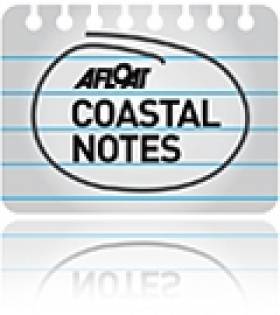Displaying items by tag: Ring of Kerry
New Coastal Greenway Announced For Ring Of Kerry
#CoastalNotes - Public Transport Minister Alan Kelly has announced the development of a major new and world-class greenway as part of a national €11 million funding for cycling infrastructure.
The centrepiece of the funding will go towards construction of one of the world’s most dramatically scenic greenways – running along an old railway line, over viaducts through mountainous tunnels overlooking the Atlantic Ocean and Ring of Kerry.
Minister Kelly has allocated €3.4 million which will go towards construction of 26km of greenway from Glenbeigh to Cahirciveen along the old Great Southern Railway - tying in with the new Wild Atlantic Way scheme that recently received additional funding.
The minister predicts this will bring cycling tourists and visitors from all over the world to the Ring of Kerry, contributing in the region of 80 jobs between construction and increased visitor numbers.
His department says the Glenbeigh-to-Cahirciveen greenway "will open up the outstanding natural beauty of the coastline between these two towns offering an exceptional and unique visitor attraction in the southwest."
Minister Kelly himself commented: “The natural beauty combined with the history of the old railway tunnels and the viaduct will make this one of the most beautiful cycling holiday destinations in the world."
He added: “I see many families, guests, adventurers, casual cyclists and all manner of people making use of this greenway. It will be constructed over the next two years and follows our experience of the Great Western Greenway in Mayo.
"An economic assessment carried out on the Mayo project estimated that about 40 jobs were created, with another 50 retained in the local economy as a result of investing in the greenway. I expect similar progress to happen in Kerry.”
The Ring of Kerry Greenway is one of three projects awarded funding under the Government’s National Cycle Network programme. A further greenway will also be developed in Co Waterford, running from Clonea along the coast to Durrow.
Local authorities submitted 38 applications to the Department of Transport, Tourism and Sport. Separately, nine towns will receive investment to improve the cycling infrastructure within their towns.
Some €6.5 million will be allocated across nine towns as part of the Active Travel Town’s programme. The programme is a multi-annual funding support programme to support the strategic development of walking and cycling in towns outside the Greater Dublin Area. This funding will enable the delivery of local cycling and walking strategies, including new cycle lanes, provision of walkways and behavioural change initiatives in local schools and workplaces to encourage people to switch their transport modes.
Funding under both the Active Travel Towns and National Cycle Network programmes will, according to the department, "enhance both the experience and attractiveness of walking and cycling across the country and brings to €25m the investment made by this Government as part of our agreed commitment to invest €65m in sustainable transport agenda to 2016."























